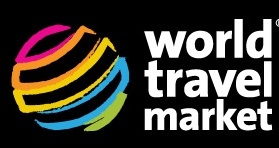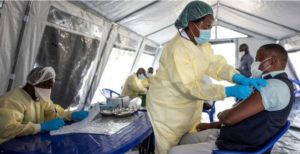UNWTO & WTM Ministers’ Summit: the legacy imperative of mega events

London : Participants at the UNWTO & World Travel Market (WTM) Ministers’ Summit stressed that “immense synergies” between mega-events and tourism should be used to generate long-time benefits for the destination and its people.
The impact of public exposure during international events, coupled with investments in infrastructure, represents one of the key long-term potentials of mega events. This was the key message coming out of the eighth UNWTO & WTM Ministers’ Summit under the theme, “Tourism and Mega-Events: building a lasting legacy”, moderated by CNN International’s Max Foster.
Opening the Summit, UNWTO Secretary-General, Taleb Rifai, underscored that “Destinations need to consider infrastructure, investment and jobs, intangible benefits such as how the country is perceived and the most effective way to involve the community when looking at the legacy of mega-events”.
Collaboration and partnerships are at the centre of this approach, said the vice -Minister of Tourism of Brazil, Vinícius Lemmertz, in reference to the recent FIFA World Cup 2014 and how it “set the agenda for public-private cooperation in Brazil”.
The positive employment legacy of the London 2012 Olympics was mentioned by VisitBritain Chairman Christopher Rodrigues while the Vice Chairman of the China National Tourism Administration, Jiang Du, highlighted the role of volunteers at the 2008 Olympic games in Beijing: “We were able to engage students, young people, and people who had retired. Volunteer work is now routine across all our mega-events.”
The Chairman of the Qatar Tourism Authority, Issa Mohammed Al Mohannadi, stressed that the infrastructure development for the forthcoming Football World Cup is being planned according to its future use.
Although intangible effects may be less visible, they are equally important. In the case of South Africa, the Minister of Tourism, Derek Hanekon recalled the benefits for country image. “When we hosted the Rugby World Cup in 1995 on the back of nothing, and it showed the world our capability”, he said.
While mega-event discussions tend to concentrate around sports, Saudi Arabia Vice President for Marketing & Programs, Saudi Commission for Tourism and Antiquities, Hamad A. Al-Sheikh, pointed out that the yearly Hajj pilgrimage, which can attract up to three million people over five days, “is the biggest and oldest event in the world.”
On the other end, Tunisia is seeing the benefits from helping smaller events to become financially sustainable. “There needs to be a new definition of mega,” suggested Tunisia Minister of Tourism, Amel Karboul. “Even if you have three people turn up to a festival you can still get five million people talking about it on social media.” This same opinion was echoed by the Minister of Tourism and Entertainment of Jamaica, Wykeham McNeill, and by the Minister of Tourism of Lebanon, Michel Pharaon, who said “Not all countries can host mega-events yet cultural events are key to promote the country and bring different people together fostering so much needed cultural understanding and peace.
“Mega-events and tourism go hand in hand, but as we heard today, destinations can also make the most of smaller events,” said World Travel Market Senior Director Simon Press.
Isabel Borrego, Secretary of State for Tourism of Spain stressed that when bidding to host a mega event “it is fundamental to evaluate properly its impacts and sustainability”.
David Scowsill, President and CEO, World Travel & Tourism Council (WTTC), called for the engagement of the private sector in the early stages of the preparation of any mega-event bid and Adolfo Mesquita Nunes, Secretary of State for Tourism of Portugal, stressed that tourism administrations need to be “involved from the beginning in any hosting of mega-events” but cautioned that the decision of bidding to host such events must be totally “in line with the main objectives of a country”.
Participating in the summit were also Hiromi Tagawa, Chairman of Japan Association of Travel Agents (JATA), Alan Gilpin, Head of the Rugby World Cup at the International Rugby Board (IRB), and Thomas Waldner from the Donauinselfest in Austria.- UNWTO / WTM
Nov. 5 , 2014















